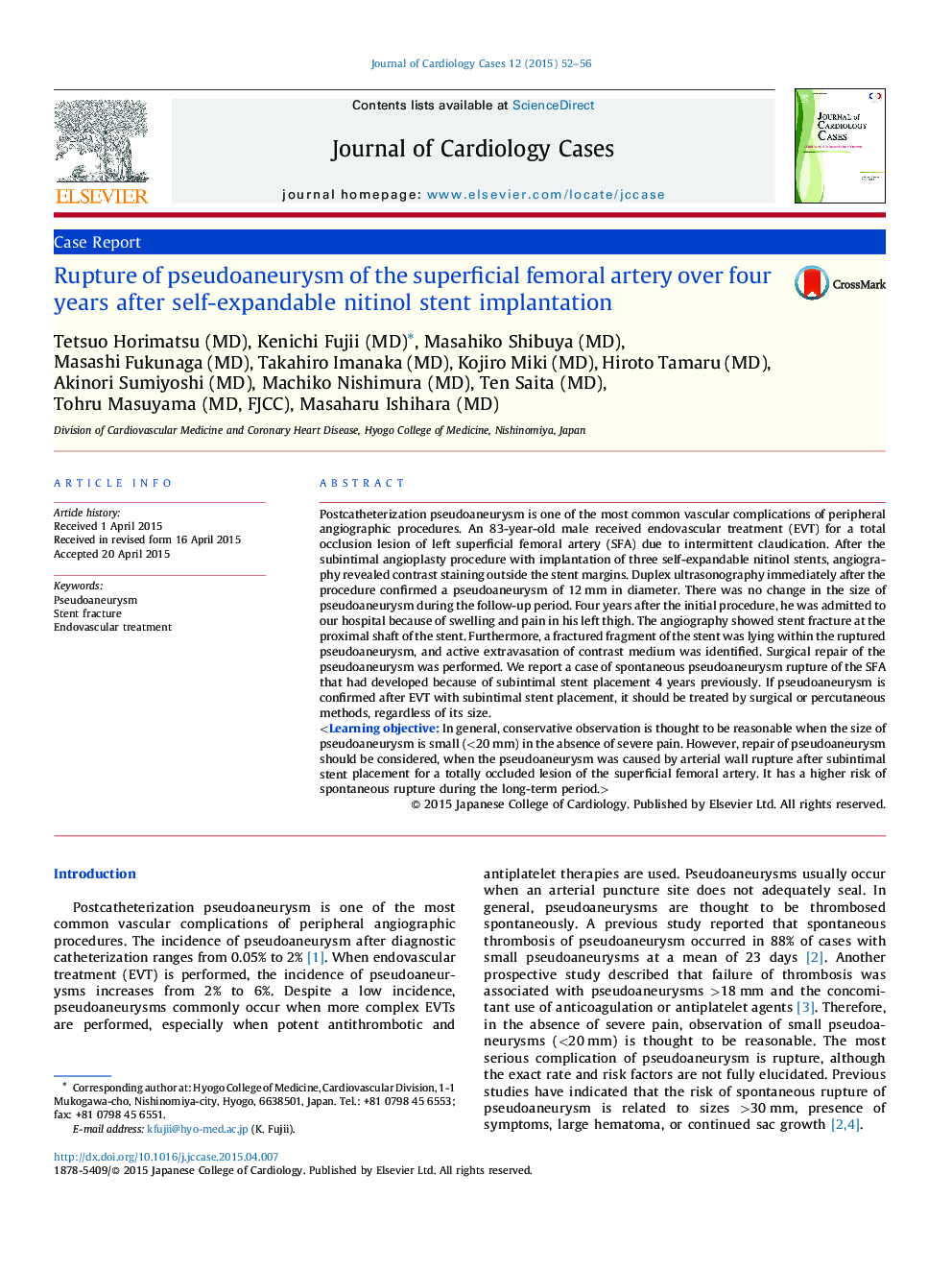| Article ID | Journal | Published Year | Pages | File Type |
|---|---|---|---|---|
| 5984532 | Journal of Cardiology Cases | 2015 | 5 Pages |
Postcatheterization pseudoaneurysm is one of the most common vascular complications of peripheral angiographic procedures. An 83-year-old male received endovascular treatment (EVT) for a total occlusion lesion of left superficial femoral artery (SFA) due to intermittent claudication. After the subintimal angioplasty procedure with implantation of three self-expandable nitinol stents, angiography revealed contrast staining outside the stent margins. Duplex ultrasonography immediately after the procedure confirmed a pseudoaneurysm of 12Â mm in diameter. There was no change in the size of pseudoaneurysm during the follow-up period. Four years after the initial procedure, he was admitted to our hospital because of swelling and pain in his left thigh. The angiography showed stent fracture at the proximal shaft of the stent. Furthermore, a fractured fragment of the stent was lying within the ruptured pseudoaneurysm, and active extravasation of contrast medium was identified. Surgical repair of the pseudoaneurysm was performed. We report a case of spontaneous pseudoaneurysm rupture of the SFA that had developed because of subintimal stent placement 4 years previously. If pseudoaneurysm is confirmed after EVT with subintimal stent placement, it should be treated by surgical or percutaneous methods, regardless of its size.
